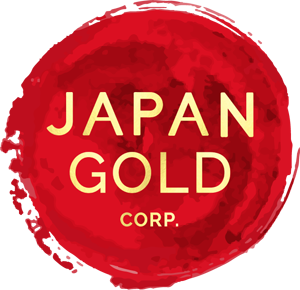Togi Goldfield
Gold mineralisation was discovered in the Togi area in 1896 and historic records from the Togi Goldfield report seven separate areas of workings along the seven-kilometre trend which produced a combined 48,000 oz of gold and 180,000 oz of silver between 1910-21. Deposits mined in the project area are divided into the Hirochi deposits in the northeast and Urugami deposits in the southwest. The Mori vein from within the Hirochi group produced 16,500 oz of gold at an average grade of 14 g/t. The vein is reported to be up to four metres wide, with gold values ranging between 8 and 20 g/t gold1. Records show the mineralisation at lower mine levels open at depth with average grades of 8.12 g/t gold and 56.9 g/t silver1, workings did not exceed 120 metres below portal level.
In the southwest area of the Togi Goldfield, historic mine workings on the Urugami deposits cover over 30 small veins and stockwork zones within a two by two kilometre zone. The Togo Mine, the largest within the Urugami area, produced over 18,000 oz of gold and 83,000 oz of silver from stockwork vein and breccia zones1,3. Sinter mapped at Urugami and the narrower stock-work style of quartz vein mineralisation indicate the top of a hot-spring epithermal system is preserved, thus supporting the potential for deeper boiling-zone vein targets.

